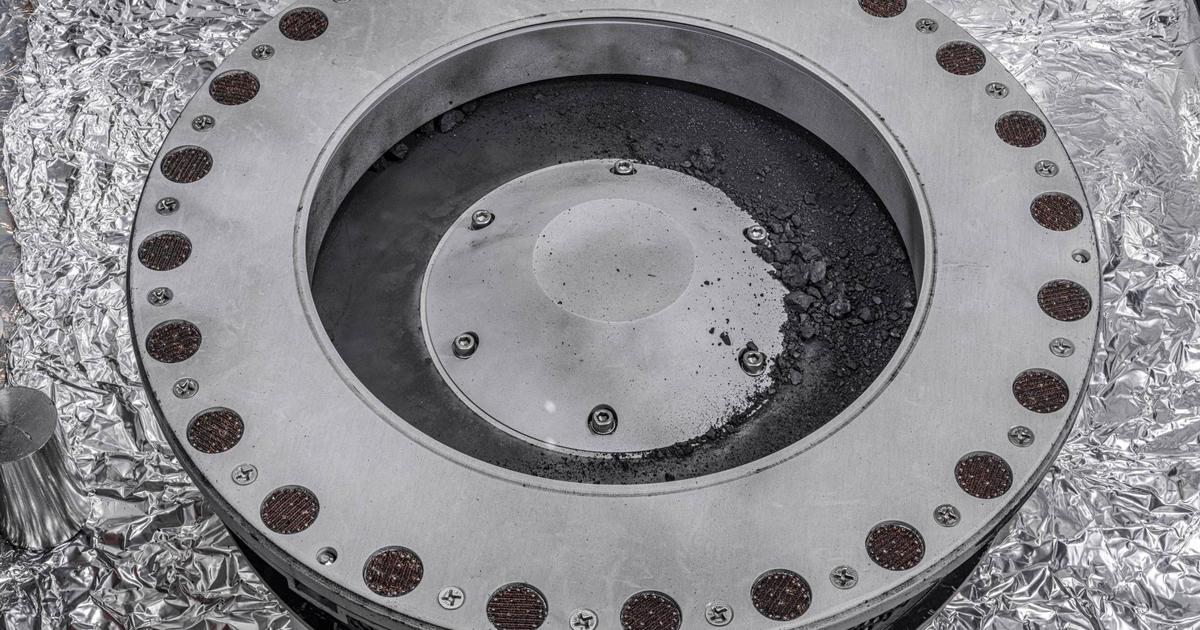
A sample of the asteroid Bennu reported by NASA contains water and carbon
The Osiris-Rex mission took this sample in 2020 from Bennu, an asteroid with a diameter of 500 meters and then located more than 300 million kilometers from Earth.
The US space agency announced on Wednesday, October 11, that the sample taken from the asteroid Bennu and returned to Earth by NASA contains water and carbon in large quantities, a discovery that will allow us to better understand whether asteroids actually brought to Earth compounds that… It allowed the birth of life, as some scientists believe.
“Water and carbon molecules are exactly the type of matter we wanted to findNASA Administrator Bill Nelson announced during an event in Houston, Texas.These are crucial elements in the formation of our planet, and will help us determine the origin of the elements that could lead to life“, he added.
Asteroids are potentially the origin of life
The first images have been shown of the largest sample of asteroids ever brought to Earth: black dust and pieces. The Osiris-Rex mission took this sample in 2020 from Bennu, an asteroid with a diameter of 500 meters and then located more than 300 million kilometers from Earth. The capsule containing the precious cargo successfully returned to Earth just over two weeks ago, landing in the American desert. Since then, the delicate process of opening the capsule has been done in a white room at NASA’s Johnson Space Center in Houston.
According to preliminary analyses, this is the richest carbon-rich space sample ever reported on Earth. “We chose the right asteroid!», beamed Daniel Glavin, a scientist at NASA, speaking about «A dream for astrobiologists“.”Carbon is essential for life on Earth, we are all made of carbon“, he explained. By colliding with Earth, asteroids like Bennu could have “sow“Our planet. Water exists on Bennu confined to so-called hydrated minerals.”We think this is how water got to Earth“, explained Dante Lauretta, the mission’s principal scientist. “The reason why the Earth is a habitable world, and why we have oceans, lakes and rivers, is that these water minerals (…) landed on the Earth between 4 and 4.5 billion years ago.»
“Bonus” item.
Before the capsule landed, the US space agency estimated it had captured about 250 grams of material from Bennu, much more than two previous Japanese missions to other asteroids. NASA, for which this was the first maneuver, has yet to confirm this estimate. But the process of opening the sample held some surprises. Because of the abundance of material outside the collection mechanism itself, the main sample has not yet been opened, said Eileen Stansbury, chief scientist at the Johnson Space Center.
“We take our time to systematically process, and take proper care of, every piece of Benno“The happy surprise of the article,” she explained.Rewards» It was explained by an incident that occurred when the sample was being collected: Immediately after the operation, NASA realized that the lid of the collection chamber could not close. The cargo was secured by being transferred as planned to the capsule, but because of this leak, scientists expected to find remains outside the cabin.
The recovered materials have already been handed over to a rapid analysis team, in order to get a preliminary idea of the composition of Bennu, which was revealed on Wednesday. The sample was examined using scanning electron microscopy, X-ray diffraction, and infrared measurements.
Future generations
Over the next six months, the NASA team will create “Samples catalogue“, explained Francis McCubbin, deputy director of this team. Scientists from all over the world will be able to “Request materials to study Bennu in their own laboratory“, he emphasized. The majority of the sample will be preserved for future generations to study with new, more efficient instruments and to answer new scientific questions. This is what was done for the lunar rocks returned during the Apollo program.
Benno analysis could be very directly useful in the future. There is a small chance (1 in 2,700 chance) that the asteroid will hit Earth in 2182, an impact that would be catastrophic. Knowing its exact composition can therefore help to understand its path better and perhaps even, if necessary one day, to calculate the necessary effect of its deflection.

“Incurable web evangelist. Hipster-friendly gamer. Award-winning entrepreneur. Falls down a lot.”
